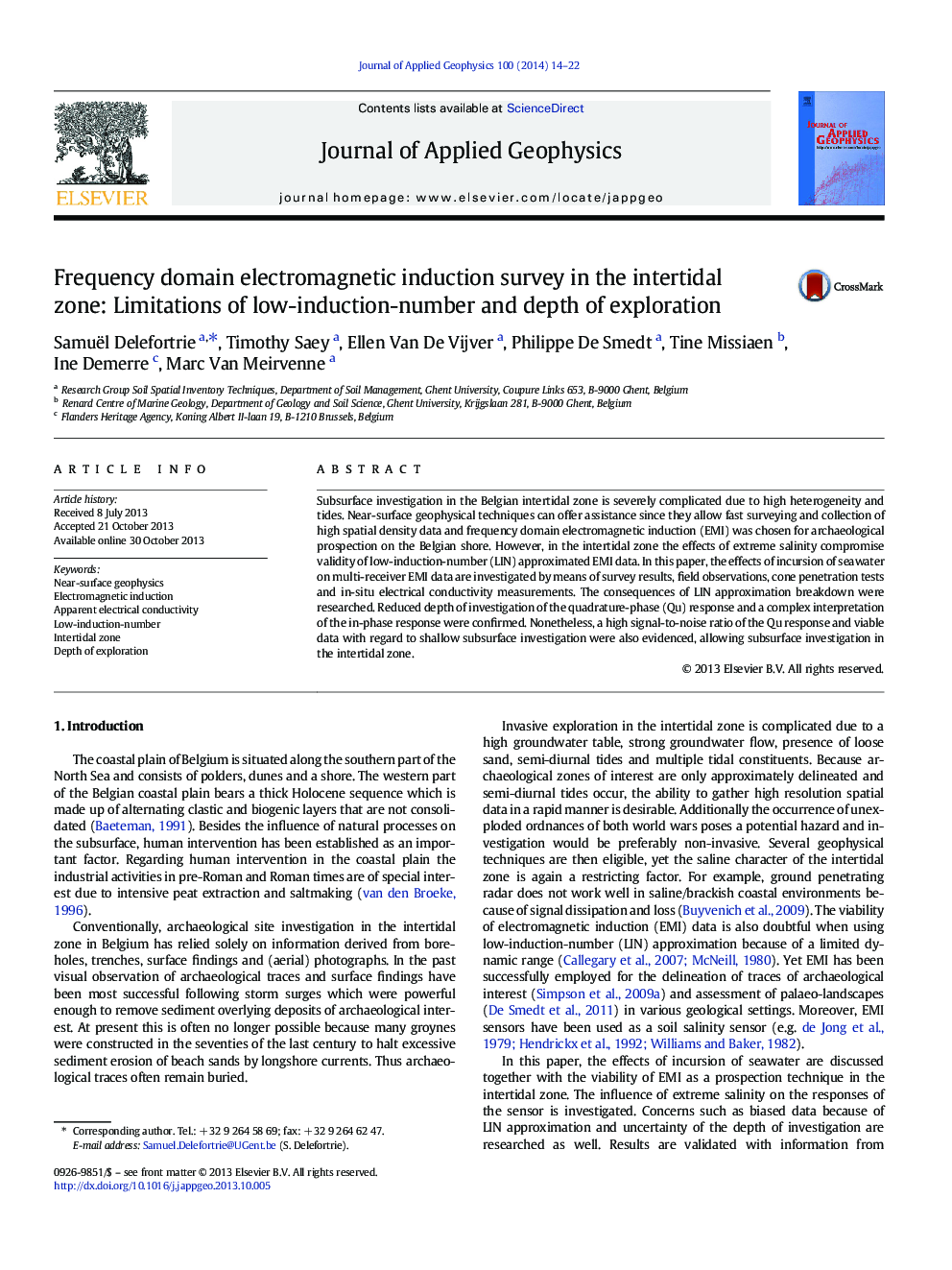| Article ID | Journal | Published Year | Pages | File Type |
|---|---|---|---|---|
| 6447363 | Journal of Applied Geophysics | 2014 | 9 Pages |
Abstract
Subsurface investigation in the Belgian intertidal zone is severely complicated due to high heterogeneity and tides. Near-surface geophysical techniques can offer assistance since they allow fast surveying and collection of high spatial density data and frequency domain electromagnetic induction (EMI) was chosen for archaeological prospection on the Belgian shore. However, in the intertidal zone the effects of extreme salinity compromise validity of low-induction-number (LIN) approximated EMI data. In this paper, the effects of incursion of seawater on multi-receiver EMI data are investigated by means of survey results, field observations, cone penetration tests and in-situ electrical conductivity measurements. The consequences of LIN approximation breakdown were researched. Reduced depth of investigation of the quadrature-phase (Qu) response and a complex interpretation of the in-phase response were confirmed. Nonetheless, a high signal-to-noise ratio of the Qu response and viable data with regard to shallow subsurface investigation were also evidenced, allowing subsurface investigation in the intertidal zone.
Keywords
Related Topics
Physical Sciences and Engineering
Earth and Planetary Sciences
Geophysics
Authors
Samuël Delefortrie, Timothy Saey, Ellen Van De Vijver, Philippe De Smedt, Tine Missiaen, Ine Demerre, Marc Van Meirvenne,
